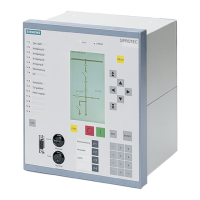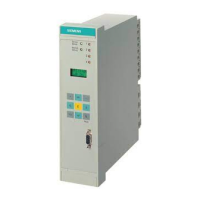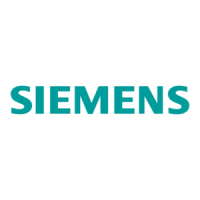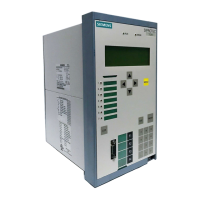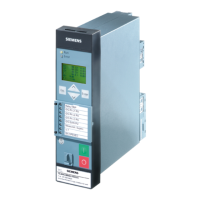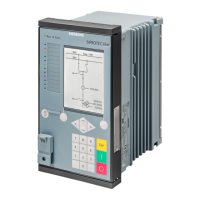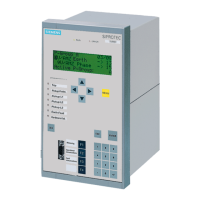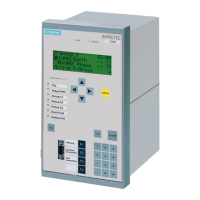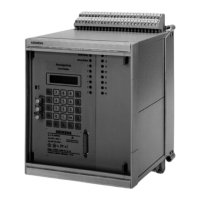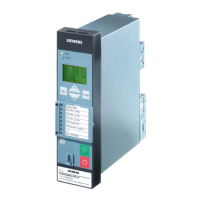Introduction
1-37SJ62 Manual
C53000-G1140-C121-1
The 7SJ62 has three voltage inputs in the MI section. The inputs can either be used
to measure the three phase-ground voltages, or two phase-phase voltages and 3V
0
from, for example, open delta voltage transformers. Displacement voltage is another
term used for 3V
0
.
The analog input quantities from the MI stage are passed on to the input amplification
(IA) stage, which provides high-resistance terminations for the analog quantities. The
IA stage consists of filters for processing the measured values. The filters are opti-
mized with regard to bandwidth and processing speed.
The analog-to-digital (AD) stage consists of memory components, a multiplexer, and
an analog-to-digital (A/D) converter. The A/D converter processes the analog signals
from the IA stage. The digital signals from the converter are input to the microcomputer
system where they are processed as numerical values in the residing algorithms.
Microcomputer
System
The actual protection and control functions of the 7SJ62 are processed in the micro-
computer system (µC). In addition, the µC controls the measured quantities. Specifi-
cally, the µC performs:
− Filtering and preparation of the measured quantities
− Continuous monitoring of the measured quantities
− Monitoring of the pickup conditions for the individual elements and functions
− Evaluation of limit values and sequences in time
− Control of signals for the logic functions
− Decision for trip, close, and other control commands
− Output of control commands for switching devices (output contacts)
− Recording of messages and data for events, alarms, faults, and control actions, and
provision of their data for analysis
− Management of the operating system and the associated functions such as data re-
cording, real-time clock, communications, interfaces, etc.
Binary Inputs and
Outputs
The µC obtains external information through the binary inputs such as blocking com-
mands for protective elements or position indications of circuit breakers. The µC is-
sues commands to external equipment via the output contacts. These output com-
mands are generally used to operate circuit breakers or other switching devices. They
can also be connected to other protective devices, annunciators, or external carrier
equipment for use in Pilot-Relaying schemes.
Front Elements Light-emitting diodes (LEDs) and a display screen (LCD) on the front panel provide
information such as targets, metering quantities, messages related to events or faults,
status, and functional status of the 7SJ62.
Integrated control and numeric keys in conjunction with the LCD facilitate local inter-
action with the 7SJ62. All information of the device can be accessed using the inte-
grated control and numeric keys. The information includes protective and control set-
tings, operating and fault messages, and metering values (see also Chapter 7). The
settings can be modified; the procedures are discussed in Chapter 6. In addition, con-
trol of circuit breakers and other equipment is possible from the 7SJ62 front panel.
Serial Interfaces A serial PC Port on device is provided for local communications with the 7SJ62
through a personal computer. Convenient operation of all functions of the device is
possible. The SIPROTEC
®
4 operating program DIGSI
®
4 is required.
www . ElectricalPartManuals . com
